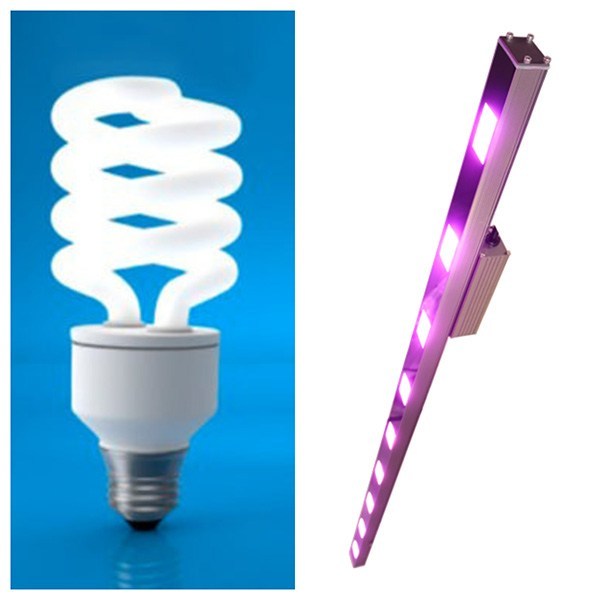
Yes, you can use any LED light to grow plants, but this does not ensure that your plants can grow healthy or efficiently. Regular LED lights will not contain enough colors(wavelengths) for plants to be photosynthesized or spectrum. Therefore, if you want to grow plants indoors, it is best to buy special LED grow lights.
LED Grow lights VS Regular LED lights
Specially Designed LED Plant Light
Advantages
Contains a specific spectral wavelength
Support all stages of plant growth, especially photosynthesis.
Low energy consumption, but large power generation.
Disadvantages
More expensive than ordinary lamps.
May cause damage to human eyes.
Regular LED Bulbs
Advantages
The price is cheap and allows you to buy a lot of bulbs.
Durable, just like the actual LED plant growth lamp.
Save energy only when it is not used frequently.
Disadvantages
Contains narrow spectral wavelengths.
Release a lot of heat.
Are LED Lights Good For Plants?
Do LED Grow Lights Really Work for Indoor Plants?
Yes, LED plant growth lights are specifically designed to produce the wavelengths required by plants in an ideal ratio. They are designed to help different stages of plant growth. On the other hand, conventional LED lamps are manufactured for daily use, especially to meet human needs. Although conventional LED bulbs produce the spectral wavelengths necessary for overall plant health, they are not concentrated enough to provide substances that are beneficial for proper care.
Which Color LED Is Best For Plant Growth?
In some university research, white spectrum LED lights are the most suitable for plant growth. Pink/purple growth lights are still effective, but slightly reduced.
How Does LED Work for Horiticulture?
The entire purpose of a horticultural lighting system is to use artificial light to grow plants in an indoor environment. LED lamp manufacturers conduct experiments and read scientific literature about specific light color wavelengths and how plants respond to these wavelengths.
Although it is not yet possible to determine the perfect combination of light color wavelengths, manufacturers have a good understanding of the effects that LED wavelength mixing can bring.
A recent study discussed the importance of several wavelength colors-red and far red, blue and ultraviolet, and green. Each color has a unique effect on plant growth, and LED manufacturers used for gardening purposes understand and incorporate these colors into their LEDs.
Most brands manipulate the sunlight spectrum in LED panels to produce similar real light effects.
Light with most of the blue spectrum is suitable for plants that pass through vegetation stages. At this stage, your cannabis plant needs to contain light in the blue spectrum. This type of light usually produces a purple effect in the growing space by delivering the main blue spectrum to the plant.
On the other hand, the red spectrum is essential for plants that grow through the flowering period. However, it is best to use most of the blue band light in the spectrum, so that the plants can produce resinous and heavy flowers when harvested.
Wanna to start your indoor farming business? Please feel free to contact us for more about the LED lights, we can provide you a LED grow light solutions according your needs. Contact VANQ LED now.























